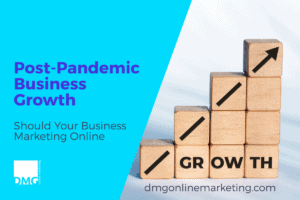Business Growth 12 Tips for 2012
 Business growth in the economic times over the past few years has been slow. However, 2012 will be a year for massive business growth if you are ready to adapt and change your process of how you do business.
Business growth in the economic times over the past few years has been slow. However, 2012 will be a year for massive business growth if you are ready to adapt and change your process of how you do business.
Here are 12 for 2012 to accelerate you business growth in the next year. With the current technology available, the growth in social channels and the level of customer participation in those channels the next year looks great for business.
1. Reduce and Redirect IT
Most businesses carry too much in their IT infrastructure. We are confident that in most cases, IT costs can be reduces by up to 30%. This doesn’t mean getting rid of staff, it means investing in advancing technologies to work smarter.
We find that IT expenditures are often over-inflated with large, unnecessary capital investment, ongoing maintenance, upgrades and support costs. By embracing technology, all this can be stripped back, freeing up your budget for business growth.
2. Provide Employees with Freedom
Empowered employees are happy and loyal, motivated and productive and will help in your business growth. Today’s employers need to build environments to accommodate a healthy work-life balance.
Telecommuting and work from home options, and flexible hours, these benefits are no longer ‘job perks’, they are now ‘expected’. Employees should be able to work and be managed effectively from anywhere as seamlessly as if they were in the office.
3. Enable Collaborative Working
Break down the barriers to teamwork by enabling employees, partners and vender’s across multiple locations to work together more effectively. Typically, managing and sharing documents and information has been a headache. Different versions exist on different machines, drafts fly back and forth via email or in print. This approach is inefficient – it wastes time, storage and risks data security.
Employees should be able to access, share and manage single versions of documents instantly from a single place, regardless of their location. Getting this right will transform the efficiency and creativity of your business and create even better partner, and customer working relationships. Relationships will be the foundation of business growth in 2012.
4. Align IT with Business Growth Strategies
IT needs to be directly aligned to the overall business growth strategy. At one time, IT were the guys that set the computers up, installed regular software updates and reset everyone’s passwords when forgotten. Time has moved on.
IT’s role in the achievement of your business growth and goals cannot be under-estimated. Whether its increasing profitability, or achieving audacious revenue goals, IT is at the heart of everything you do. Use them to devise innovative solutions to reduce costs, save time, or to help build better customer relationships. When you define your business strategy, go to IT and ask, “How do we get this done and what do we need?”.
5. Be Prepared For Disaster Recovery
One of the biggest risks to a business is unexplained disaster and the ability to keep the wheels turning. From floods, snow and ash clouds, to terrorist attacks and fire, business can quickly grind to a halt. This can have a crippling effect to businesses and livelihoods of all sizes.
Business owners should have a ‘Plan B’ in their back pocket that will ensure business continuity during unexpected business impact events. Having this clearly mapped out will help mitigate the risk of business loss and allow continued business growth.
6. Make IT Updates Little but Often
Be aware of periodic mass IT updates. We find that general productivity will often take a hit as systems are updated in big ‘overnight’ roll outs. New systems and processes typically take days or even weeks to get used to, during which, business growth falls. The answer is to make smaller updates more frequently.
This way, employees are not hit with a new system that they are unfamiliar with. You also minimise the risk of errors. Big updates usually carry a risk of major errors that can destroy productivity altogether. What would happen to sales if the CRM system failed on the last day of the month? Little and often just like your business growth!
7. Build End-to-End Sales Automation
Complete automation of the entire sales process is essential for streamlined, efficient and effective sales and marketing. From the second an enquiry comes in, it should be in the system, get allocated, monitored and managed until it becomes a sale. Only then can your sales and marketing process be truly optimised. A fully automated sales process means that nothing slips through the cracks. It saves money on unnecessary data entry work, speeds up lead follow-up times, makes sales and marketing more accountable, empowers management and reduces lost revenue opportunities through unnecessary administration. Anything less is losing you money.
8. Make it Easy to Scale Up and Down
Being able to scale up and down quickly and easily in response to sudden fluctuations in demand is essential if you are to take advantage of market opportunities and guarantee customer satisfaction.
Today and in the future, people don’t like to wait. Customers don’t want to be on hold, prospects shouldn’t have to wait to give you money. These days there are no excuses.
Business must ensure that their business can scale quickly to demand and that means getting employees up and running quickly. It also means being able to scale down during hard times without incurring the costs of unused equipment, or software licenses.
9. Don’t Confuse Control with Security
The data and information you hold in your business is critical – from accounts and customer information, to employee files and business plans. Many businesses are nervous about placing this information anywhere other than on their own servers. They are typically worried about security. So what happens when there’s a fire, a server fails, or equipment is stolen?
The truth is that these security concerns are not security concerns at all. They are control concerns. Don’t compromise on information security. Consider more secure and indeed more cost-effective models of storing data, such as in the Cloud. That way, your information is safe from fires, thieves and server failures. You may also save money on data storage!
10. Support Today’s Customers Proactively
Today, people are fully aware of the plethora of information sources available. They want information to solve their problems instantly. That’s why it’s important for businesses to engage with customers proactively across all available channels – from traditional phone and face-to-face discussion, to interactive websites, social networking and intelligent call handling.
Businesses must be agile and sharp enough to deal with issues before the customer has a chance to even pick up the phone. Achieving this will generate unrivalled customer loyalty and many years worth of repeat business and up-sell opportunities.
11. Move from Outbound to Inbound
One of the biggest costs a business can face in the future is lead acquisition. With more and more people using online research for making purchasing decisions it is time to participate in those channels. If you want to keep the sales team moving you need to start developing and implementing a inbound marketing strategy.
12. Be Ready to Adapt
With the changes in cloud computing, inbound and online marketing and SEO best practices the one thing your business must be able to do is adapt. This does not mean jumping from one shiny object to another, what it means is listening to customers and be ready to participate in the channels they are using.
Being agile and quick to adapt will set you apart from the companies that are stuck in systems and policies that do not work.
Flickr photo from s_falkow






